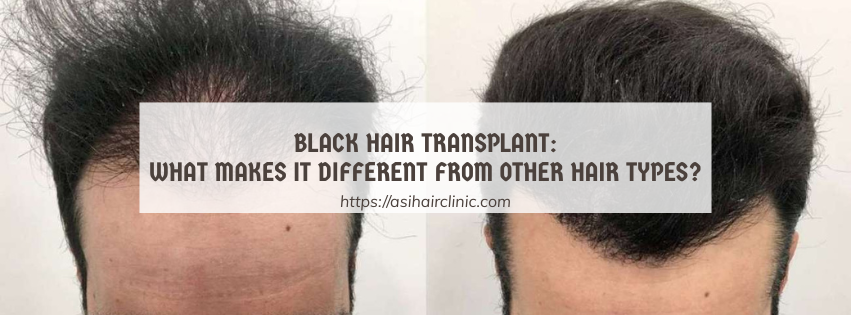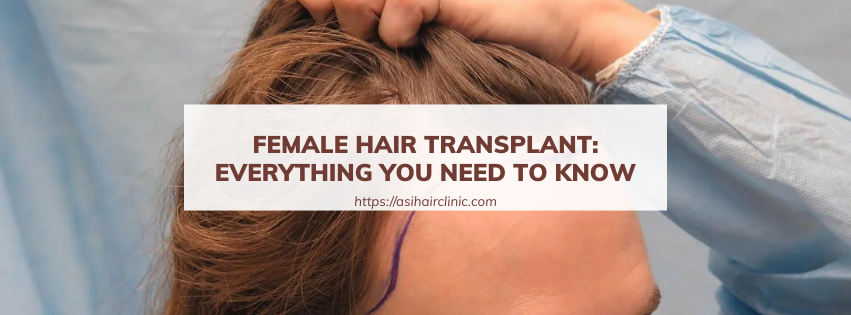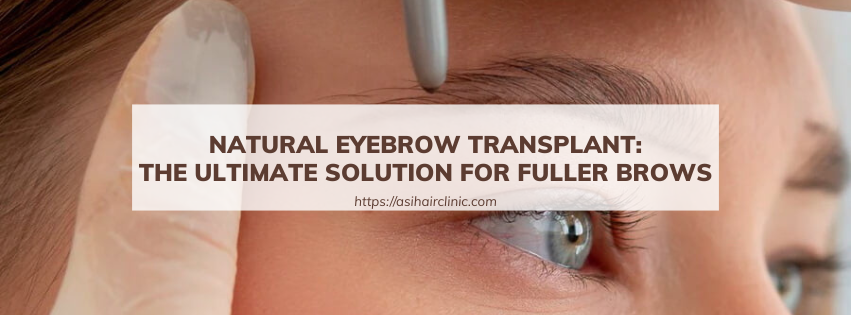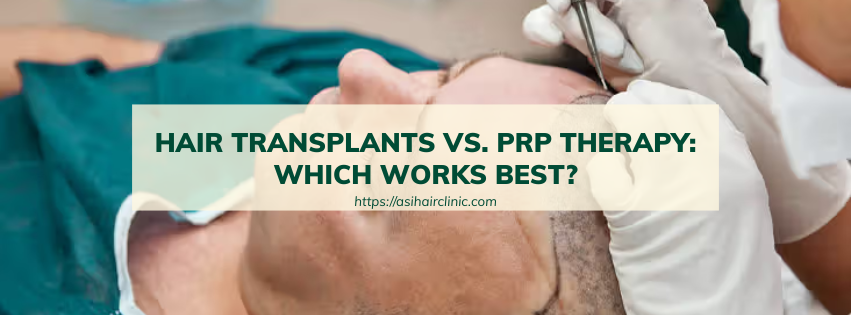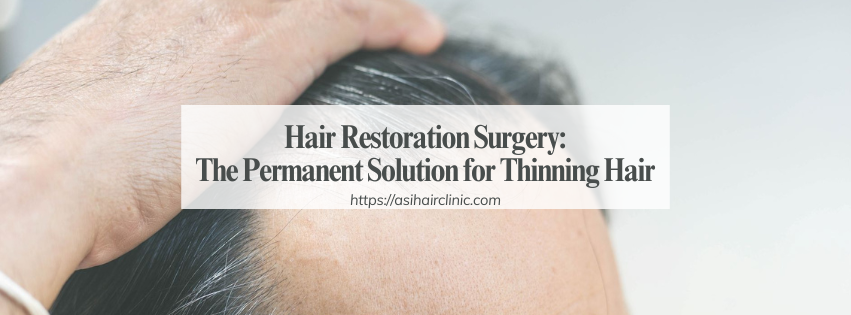Hair Transplant That Works - Fuller Hair, More Confidence!
Hair Transplant is a surgical procedure that involves moving hair follicles from a donor site on the body to a balding or thinning area. This innovative technique provides individuals with a permanent solution to hair loss, allowing them to regain their confidence and achieve the fuller head of hair they've always desired.
1. What Is Hair Transplant?
Hair transplants have revolutionized how we perceive and combat hair loss. As a response to the emotional and psychological challenges faced by those struggling with thinning hair or baldness, this medical advancement offers a ray of hope. But what exactly does it entail?
1.1. Understanding Hair Transplant Surgery
At its core, a hair transplant is an outpatient procedure that redistributes hair follicles to areas where hair growth has diminished or stopped altogether. The surgery can be performed using different techniques, and its success largely depends on the patient's overall health, the skill of the surgeon, and the method chosen for transplantation.
The key aspect of hair transplant surgery is that it utilizes the patient's own hair, making it both a natural and effective solution. This minimizes rejection risks and ensures a seamless integration of transplanted hair with existing strands. During the procedure, local anesthesia is usually administered to keep the patient comfortable.
Hair transplant surgeries can last several hours, depending on the extent of the area being treated. Surgeons often take precautions to minimize discomfort, ensuring patients experience minimal pain during the process. Recovery can vary, but most patients can return to normal activities within a few days.
1.2. Why Do People Choose Hair Transplants?
Many people seek hair transplants for various reasons. A primary motivation is the desire for aesthetic improvement. For many individuals, a full head of hair symbolizes youth and vitality. Losing hair can lead to feelings of insecurity, self-consciousness, and even depression.
Moreover, the psychological benefits of undergoing a hair transplant are significant. Restoring one's hair can enhance self-esteem and improve social interactions. Patients report feeling more confident in personal and professional settings after undergoing the procedure.
Additionally, as technology advances, hair transplant techniques have become more sophisticated. Patients are no longer limited to outdated methods that produced unnatural results. Consequently, many view hair transplants as a viable option in a world that increasingly values appearance.
1.3. Who Is a Good Candidate for Hair Transplant?
Determining candidacy for a hair transplant involves assessing various factors. Generally, anyone experiencing thinning hair, hair loss due to genetics, or specific medical conditions may benefit from the procedure. However, there are certain criteria that enhance a person's suitability for a hair transplant.
A good candidate typically has sufficient donor hair available. This means they should have healthy hair growth on other parts of their scalp or body. Additionally, potential candidates must possess realistic expectations regarding the outcome.
It's also essential for candidates to evaluate their overall health. Conditions such as uncontrolled diabetes may complicate surgery and recovery. Those considering a hair transplant should consult with a qualified specialist to ensure they meet the necessary criteria before proceeding.
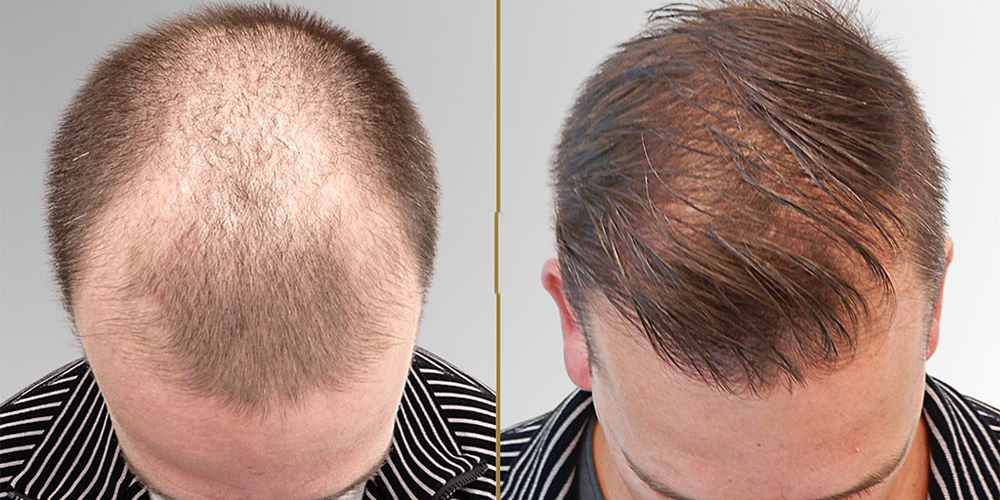
2. Types of Hair Transplant Procedures
As the field of hair restoration evolves, so too do the methods employed to enhance hair growth. Understanding the differences between these procedures can help prospective patients make informed decisions about their treatment options.
2.1. FUE (Follicular Unit Extraction) - The Modern Approach
FUE, or Follicular Unit Extraction, is one of the most prevalent methods used today. This minimally invasive technique involves extracting individual hair follicles from the donor site and implanting them into the balding areas.
One of the main advantages of FUE is its precision. Because each follicle is transplanted individually, the results tend to be more natural-looking than older methods. Furthermore, FUE doesn't leave a linear scar, which appeals to many patients who prefer to wear short hairstyles.
The recovery period with FUE is generally shorter compared to traditional methods. Most patients resume normal activities within a few days. With proper care, the results can be remarkable, often becoming fully visible after several months.
2.2. FUT (Follicular Unit Transplantation) - The Traditional Method
FUT, or Follicular Unit Transplantation, is the traditional method of hair transplantation. This approach involves removing a strip of skin containing hair follicles from the donor area, which is then divided into smaller units for implantation.
While FUT is effective, one drawback is the linear scar left at the donor site. This can be a concern for patients who favor short hairstyles. However, many surgeons skilled in FUT can minimize scarring through advanced techniques.
Recovery time for FUT is typically longer compared to FUE, as the donor area requires healing from the strip excision. Nevertheless, FUT can be advantageous for those needing larger grafts, as it can yield more follicles per session.
2.3. Comparing FUE and FUT: Which One Is Right for You?
When deciding between FUE and FUT, it's vital to consider individual preferences, goals, and circumstances.
For those seeking a less invasive option with minimal scarring, FUE may be the better choice. It’s particularly suitable for patients with limited donor hair or those who want to maintain short hairstyles without visible scars.
Conversely, if the need for a large number of grafts exists, and scarring is less of a concern, FUT could be the preferable method. Consulting with a knowledgeable hair restoration specialist can help clarify which technique aligns best with your objectives and lifestyle.
3. How Does a Hair Transplant Work?
Understanding the process of a hair transplant can demystify the procedure and alleviate concerns. Here's a closer look at how it unfolds step by step.
3.1. Step 1: Initial Consultation and Hair Analysis
Before any surgical procedure, a thorough consultation is essential. During this initial meeting, the surgeon will assess the patient’s hair loss pattern, existing hair density, and overall health.
A comprehensive hair analysis helps determine the most appropriate method for transplantation. The surgeon will discuss options, expected outcomes, costs, and any possible risks involved. This is also a great opportunity for patients to ask questions and express any anxieties.
Realistic expectations are crucial; patients need to understand that while the results can be life-changing, they may not achieve a full head of hair overnight. The surgeon will provide insights into what can realistically be accomplished based on individual characteristics.
3.2. Step 2: The Procedure - What to Expect?
On the day of the procedure, patients are given local anesthesia to ensure comfort. Depending on whether FUE or FUT is chosen, the surgeon will either extract individual follicles or remove a strip of skin from the donor area.
After harvesting, the follicles are meticulously prepared for implantation. The surgeon creates small incisions in the balding area, placing the hair follicles strategically to achieve a natural growth pattern.
Though the length of the procedure varies, many patients find the experience manageable. Being able to listen to music or watch television during the surgery can help distract from any discomfort, making the process feel faster.
3.3. Step 3: Recovery and Post-Procedure Care
Post-surgery care is crucial to ensure optimal results. Patients may experience mild swelling, redness, or discomfort in the donor and recipient sites. These sensations typically subside within a few days.
Surgeons often provide detailed aftercare instructions, emphasizing the importance of avoiding strenuous activities that could impact healing. Keeping the scalp clean and following prescribed medication regimens is essential for preventing infection.
As new hair begins to grow, many patients find themselves eagerly monitoring their progress. Full results are generally visible within six to twelve months, culminating in a transformed appearance and enhanced self-esteem.
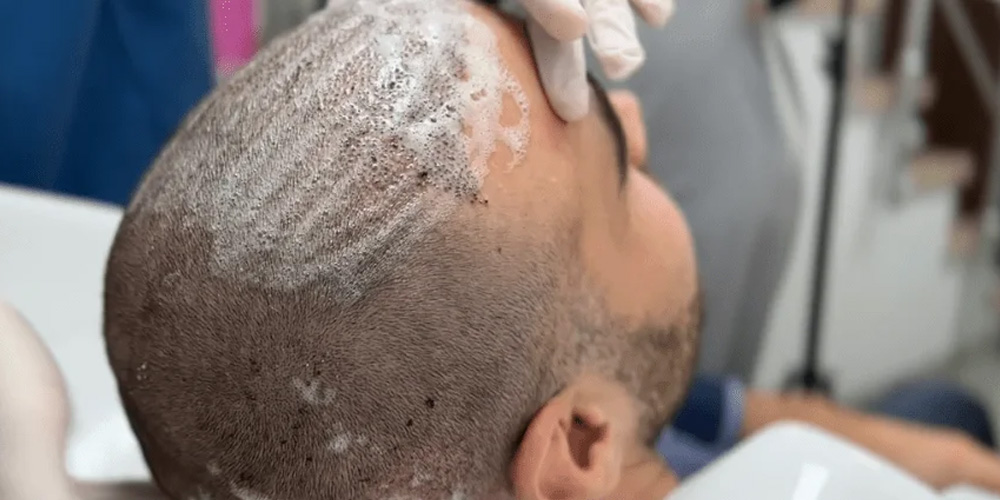
4. Benefits of Hair Transplant - Why It’s Worth It
Beyond just the physical changes, hair transplants offer numerous benefits that contribute to improved quality of life.
4.1. Permanent and Natural-Looking Results
One of the most attractive aspects of a hair transplant is the permanence of the results. Since the procedure utilizes the patient's hair, the newly implanted follicles can grow naturally for years to come. In contrast to other hair restoration methods, which may require ongoing investments, this offers a long-term solution.
Natural-looking results further enhance the appeal of hair transplantation. Skilled surgeons use techniques designed to mimic natural hair growth patterns, resulting in a seamless integration of the transplanted hair with the existing strands.
Unlike wigs or hairpieces, which can look artificial or require constant adjustment, a hair transplant becomes an inherent part of the individual's identity, offering a sense of authenticity that is invaluable.
4.2. Boost in Self-Confidence and Appearance
Undergoing a hair transplant can significantly boost self-confidence. Individuals often report feeling more attractive and youthful after the procedure. The psychological impact of having a full head of hair should not be underestimated; it can lead to improved social interactions, enhanced career prospects, and increased overall happiness.
Ultimately, a successful hair transplant can transform how individuals view themselves, allowing them to embrace opportunities they might have shied away from previously.
4.3. Low Maintenance Compared to Other Hair Restoration Methods
Compared to solutions like topical treatments or hair systems, hair transplants are relatively low maintenance. Once the initial recovery phase is complete, there’s little required in terms of upkeep.
Patients can wash and style their hair just like they would with their natural hair. This ease of maintenance adds to the appeal of hair transplants, allowing individuals to enjoy their results without complicated routines or frequent visits to specialists.
5. Common Myths About Hair Transplant Debunked
Despite the advances in hair transplantation, several myths persist that can deter individuals from pursuing this transformative solution. Let’s address some common misconceptions.
5.1. Myth #1: Hair Transplants Are Painful
Many people fear that hair transplants are excruciatingly painful procedures. However, with advancements in anesthesia techniques, patients experience minimal pain during the surgery itself.
Post-operative discomfort is generally mild and manageable with prescribed medications. Many patients report feeling surprisingly comfortable throughout the entire process, dispelling the myth that hair transplants are synonymous with unbearable pain.
5.2. Myth #2: The Results Look Unnatural
Another misconception is that hair transplants produce unnatural-looking results. This belief often stems from outdated techniques that were once common in the industry.
Modern methods, particularly FUE, focus on creating natural hairlines and growth patterns. When performed by skilled surgeons, the results can be remarkably realistic, making it nearly impossible for others to detect that a transplant has occurred.
5.3. Myth #3: Hair Transplants Are Only for Men
A prevalent myth is that hair transplants cater exclusively to men. While it is true that male-pattern baldness is more commonly discussed, women also experience hair loss, often due to hormonal changes, genetic predisposition, or medical conditions.
Hair transplants can be equally beneficial for women seeking to restore volume and thickness to their hair. The stigma surrounding female hair loss is gradually dissipating, allowing more women to explore this empowering option.
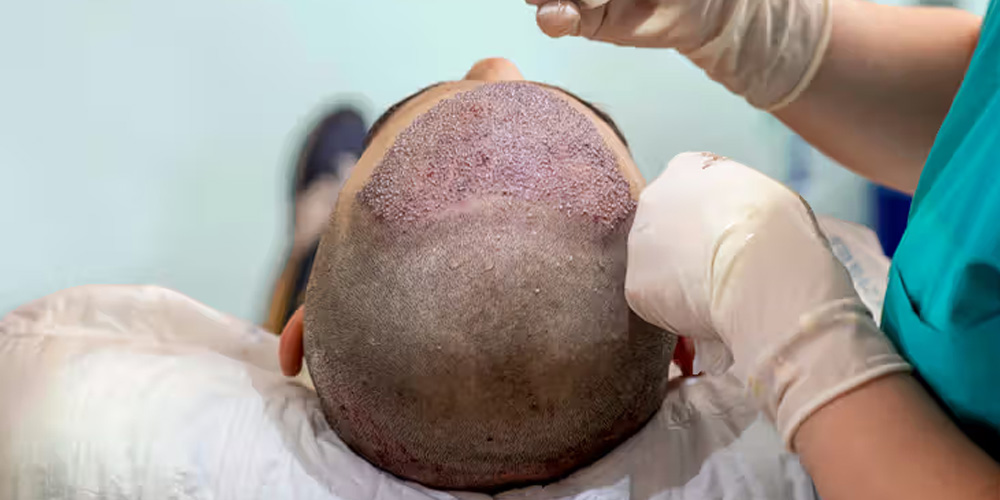
6. FAQs About Hair Transplant
As interest in hair transplants continues to grow, many questions arise. Here's a look at some frequently asked queries.
6.1. How Long Does It Take to See Full Results?
Patience is vital when it comes to hair transplants. While transplanted hair follicles begin to grow within a few months post-surgery, the full results may take six to twelve months to manifest.
During this time, patients will go through a shedding phase, where some of the transplanted hair may fall out. This is a normal part of the process, and soon after, new hair will start to emerge, leading to the desired transformation.
6.2. Are There Any Side Effects or Risks?
As with any surgical procedure, there are potential risks and side effects associated with hair transplants. These may include infection, bleeding, scarring, or the possibility of poor hair growth in the transplanted area.
However, when performed by qualified professionals, complications are relatively rare. Following post-operative care guidelines significantly reduces the risk of negative outcomes.
6.3. Can Hair Transplant Work for Severe Baldness?
Individuals with severe baldness can still benefit from hair transplants, though the degree of success may depend on the availability of donor hair.
In cases where there is insufficient donor supply, alternative methods, such as body hair transplantation, can be explored. Consulting with a skilled hair transplant specialist can help determine the best course of action for those with advanced hair loss.
Conclusion
In conclusion, a hair transplant is a powerful tool for restoring confidence and achieving a fuller head of hair. Whether opting for FUE or FUT, the advancements in this field offer individuals a chance to reclaim their appearance and sense of self.
While the procedure has its nuances and considerations, the overwhelming benefits-both physical and emotional-make it a solution worth exploring. If you’re grappling with hair loss, a hair transplant could be the journey that leads you to a renewed sense of self-confidence and satisfaction. Embrace the possibility of transformation and take the first step toward a brighter, more confident future!
LATEST POSTS

